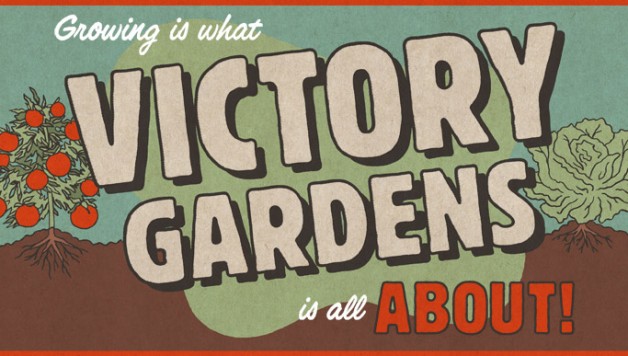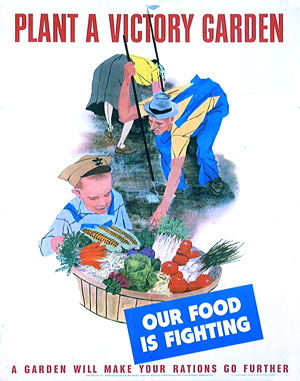Remember Victory Gardens? I do… Well, from high school US History class, I do. Remember how they provided approximately 40 percent of all U.S. vegetable produce during World War II? Remember how the government declared a boost in morale as being one of the many benefits of growing independently?
The Possibilities of Hydroponics
Well a similar boost in morale and a similar level of relief provided to our food system could potentially be achieved today with hydroponics as a contemporary Victory Garden concept. Obviously, any method of growing one’s own food is encouraged, but soilless growing offers a plethora of environmental benefits, including the reduction of water and nutrient inputs. Thus, hydroponic growing is more environmentally and economically feasible than growing conventionally if done sustainably. It also makes the possibility of growing such a significant portion of the United States’ vegetable produce much more likely, as hydroponic yields typically dwarf those of conventionally grown plants.
4 Reasons Why We Need Food Relief… Now
Our food system today is facing many more pressures than it faced during WWII, when the primary reason for growing independently was the depleted labor force resulting from the war effort. Some current pressures include, but surely aren’t limited to:
1. Overpopulation
Norman Borlaug’s high-yield wheat and other agricultural innovations have supported a larger global population than ever was thought possible (even so, there are still 842 million that are hungry in our world.) We are going to reach a point, probably sooner rather than later, that even our mass-producing industrial food system will not be able to support the exponentially-growing global population.
2. Climate Change & Drought
Drought is seriously threatening our ability to grow a significant portion of the nation’s produce. California is facing its 3rd straight year of drought conditions, progressively getting worse each year.
3. “Western Diet”
Humans are consuming more meat in their diet than they ever have. The amount of fossil fuel energy input required for a kcal of animal protein can be up to 23.5 times that of plant protein.
4. Industrial Food Production in General
Conventionally-produced food contributes to a wide variety of environmental problems, such as pollution from synthetic fertilizers and pesticides, greenhouse gas emissions from fossil fuel consumption, and wildly excessive water usage. These practices, of course, contribute to climate change and drought.
Hydroponic Solutions
With the above circumstances in mind, doesn’t it seem like there should be more urgency now to grow independently than there was during WWI and WWII? It sure does to me. Obviously, the U.S. government will do little to campaign for its citizens to grow their own food, with its allegiance to big-ag. So, like many environmental efforts, growing hydroponically to relieve pressure on the food system will have to be a grassroots movement. Personally, I have faith that such a movement can occur, as millennials in the U.S. are growing increasingly engaged with food issues.
Compact nutrient film technique (NFT) hydroponics system grows a variety of lettuce. Image via www.ugrosystems.com
The ideal food production method for a grassroots movement is hydroponics, as small-scale setups can be simple, low-maintenance, and affordable. Relatively large amounts of food can be produced in a small area, which is a very appealing trait to the many of us who don’t have much space to work with. For green job-seekers, hydroponics skills and knowledge may even come in handy down the road as vertical farms and other large-scale soil-less growing operations come into existence. Like any method of growing one’s own food, mood and health benefits can be derived from hydroponics. It’s also an effective means of exhibiting consumer power, allowing one to distance themselves from industrially-produced foods and corporate sellers (whether they’re organic or not, this is a good thing).
A Bright Future
So how many people are needed to make a significant impact? During WWII, it took 20 million people to grow 40% of the nation’s vegetable produce. Today, using conventional growing methods, 46.6 million people would be required to make the same impact. Given the huge yield advantage that hydroponics possesses, it’s safe to say that number can be significantly reduced and hydroponics will become a form of contemporary Victory Garden.
Call me wildly optimistic, but I definitely think a worthy impact can be made, especially if some of the common misconceptions about hydroponics, as well as the stigma surrounding it, are rectified.
Feature Image: Victory Gardens poster. Image via VictoryGardensVancouver.ca

